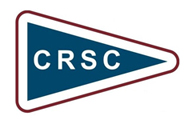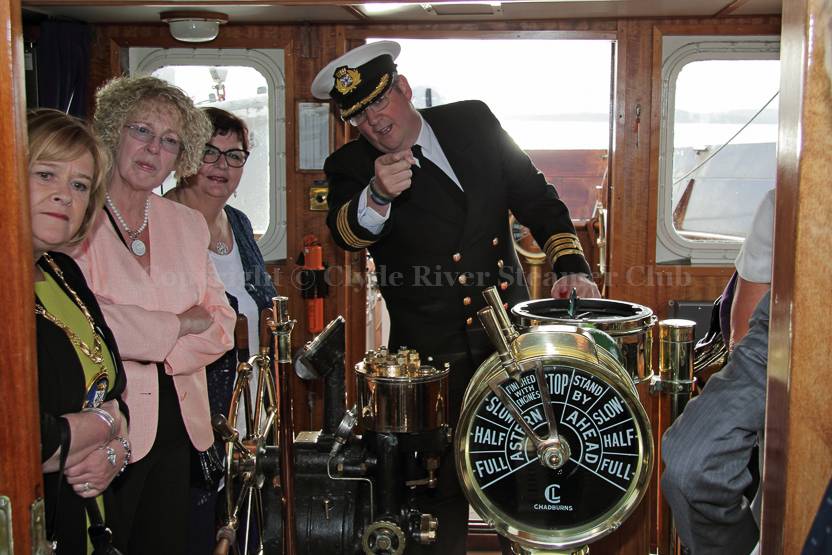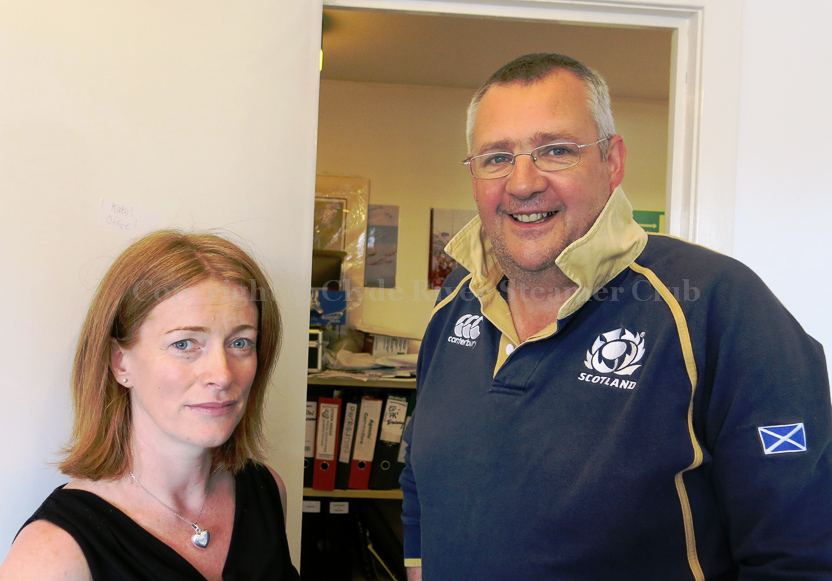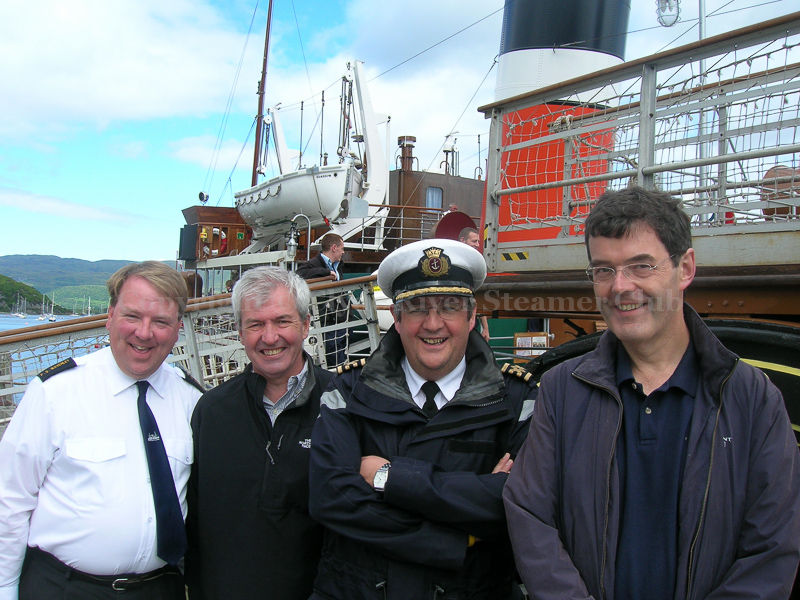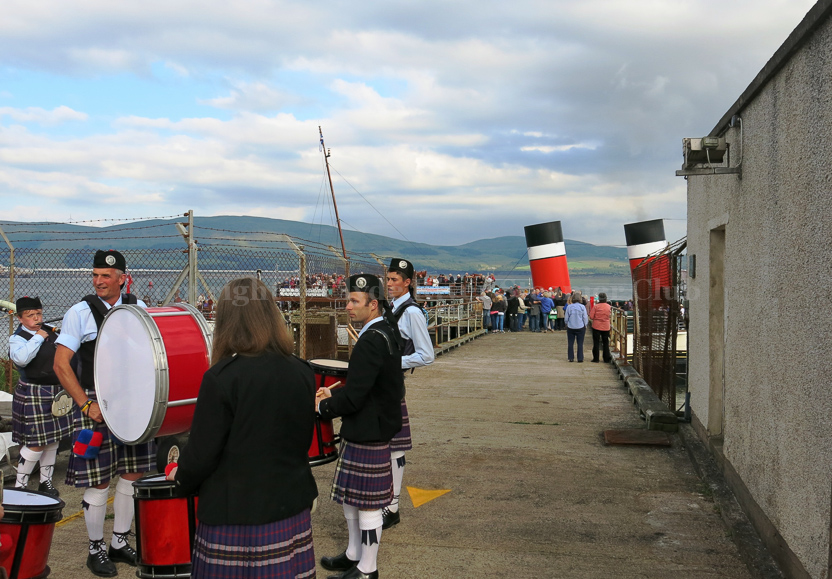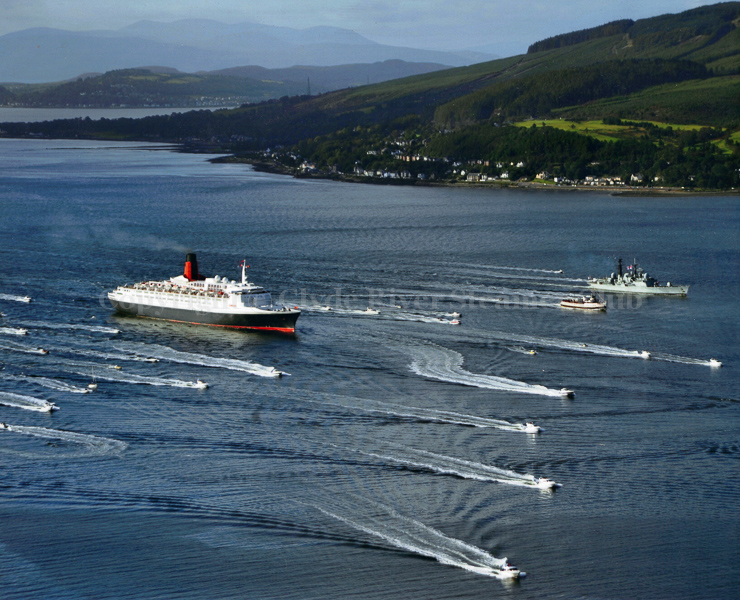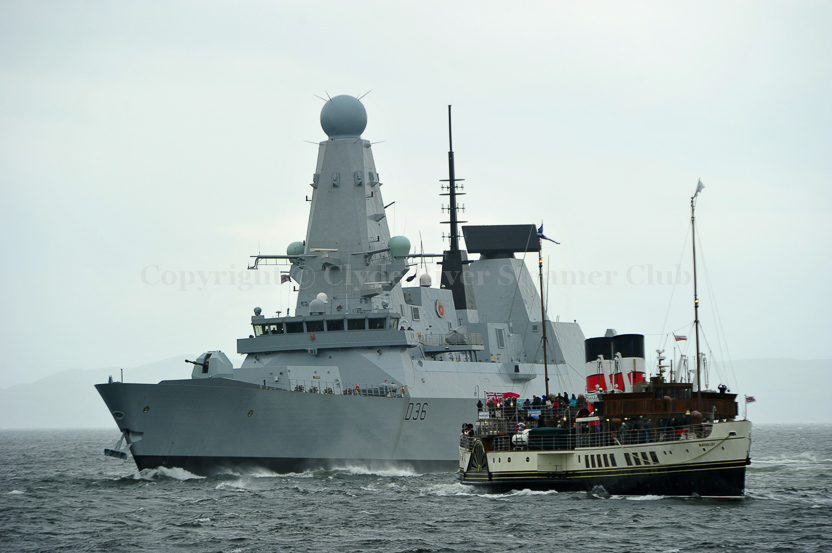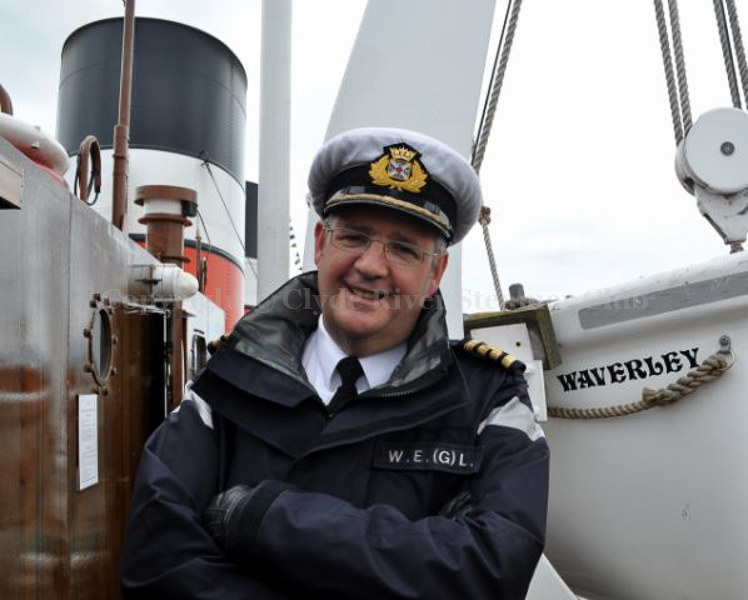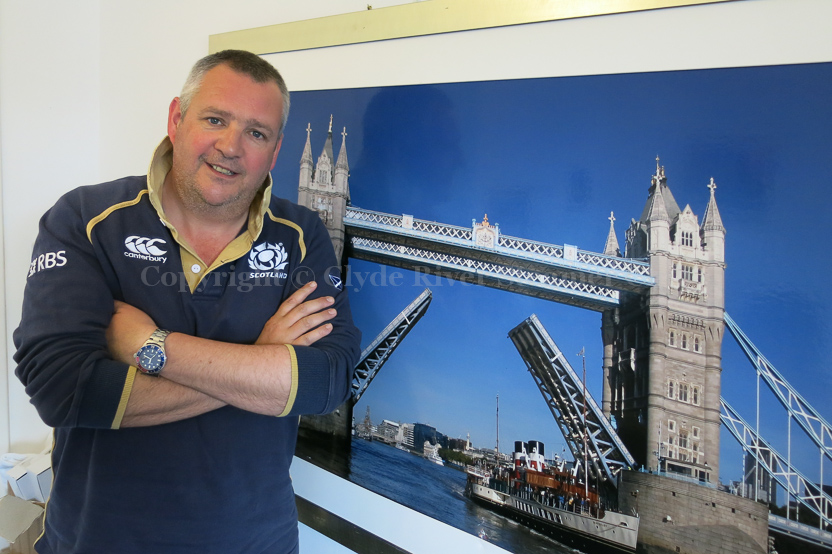This is the first in an occasional series of encounters with West of Scotland shipping personalities. Captain O’Brian has been senior master of Waverley since 2008
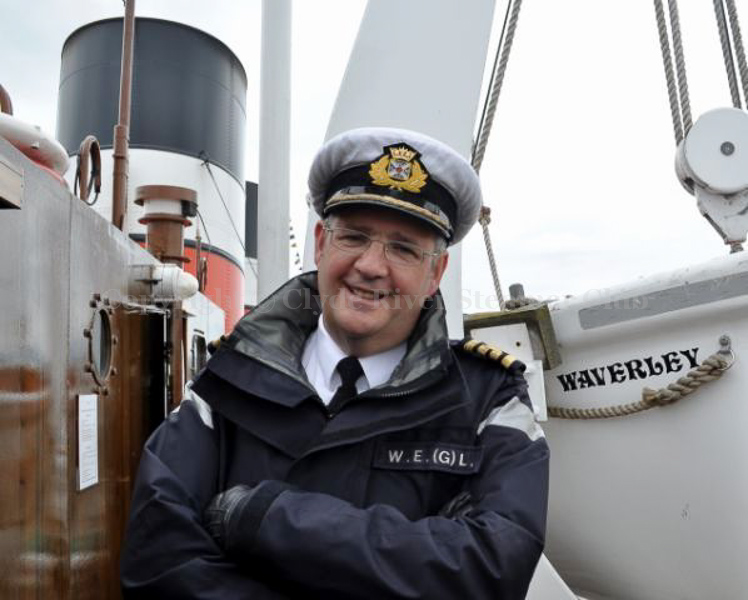
His parents met on the paddle steamer Caledonia. Childhood holidays at Rothesay were “basically lived on the water”. He spent two teenage summers as assistant purser on Glen Sannox, Saturn and Clansman. In the course of a 24-year career with CalMac, he worked his way up from ‘gangway boy’ to relief chief officer.
It is no exaggeration to say that Andy O’Brian, Waverley’s senior master, has the waters of the Clyde and Western Isles in his blood. Just don’t tell that to his critics, who love to question his judgement when a Waverley sailing is cancelled or diverted. Now in his eighth summer in command, Captain O’Brian has survived the brickbats, weathered the storms of uncertainty over the paddler’s future, and kept the ship running. In a regulatory environment that has made commercial operation of a 67-year old steamship increasingly difficult, he can look on his achievement with pride.
During a two-hour conversation at Waverley Excursions Ltd (WEL) headquarters in Glasgow, Captain O’Brian made the following points:
● Modern safety regulations impose severe constraints on the Waverley. “You have to comply but also apply common sense.”
● After replacement of engine parts last winter, Waverley runs two revolutions per minute faster and burns 50 litres less fuel per hour.
● Every saving helps to ensure Waverley’s future. “Everything is linked”, down to bar pricing and the cost of garbage disposal.
● WEL pays no berthing fees at piers owned by Argyll & Bute Council, and would like to pay less at the four CMAL piers it uses.
● Waverley hopes to revisit Campbeltown in 2015, but calls at Ardrishaig will not be possible until the pier fenders are replaced.
● The team at WEL, led by chief executive Kathleen O’Neill, is “a family. We work for each other as much as for the ship.”
Buoyed by Waverley’s smooth winter overhaul, a successful Western Isles season and the resumption of Cumbrae calls at Keppel, Captain O’Brian takes a sanguine view of his responsibilities — the toughest part of which is “making a decision not to sail the ship. You face a choice,” he says, “between running the day’s timetable as planned and preserving revenue, which is essential for the company’s continued operation; or following instinct, training and the caution we’re all taught to observe, and cancelling or altering the cruise, potentially disappointing people, damaging the company’s reputation and denying revenue. Decisions are not taken without a lot of thought.
“Certain people say I cancel more sailings than any of my predecessors, but that’s not so if you look at the statistics. We will always err on the side of caution — that’s WEL policy. No one in this company will ever apply commercial pressure [to put the boat out in unsuitable conditions] — you put all that on yourself [as master], because you’re constantly aware of the financial implications.”
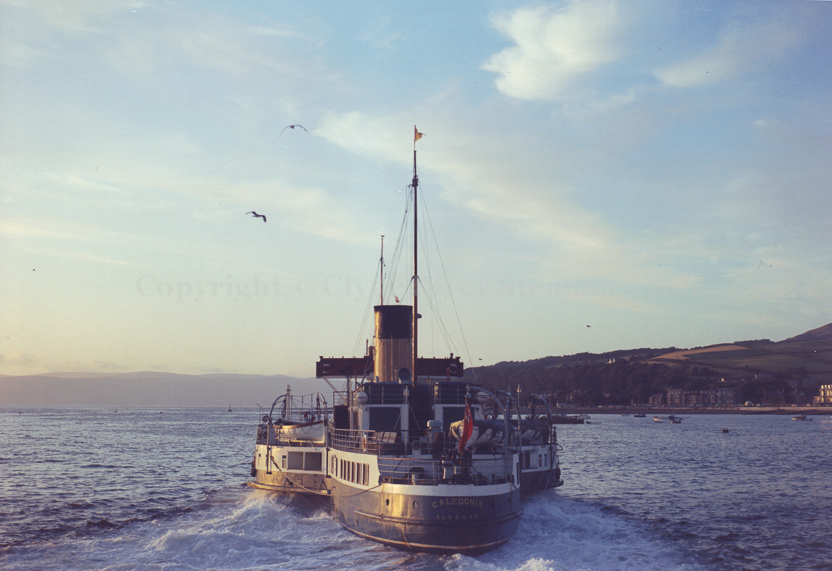 |
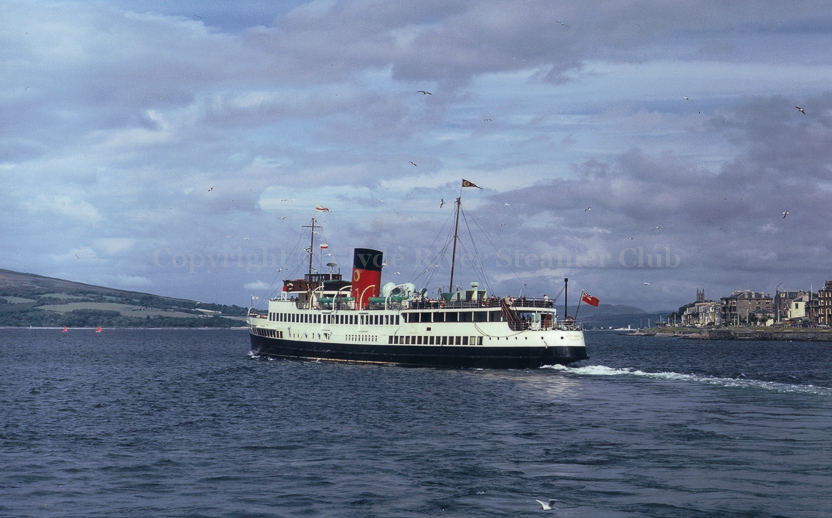 |
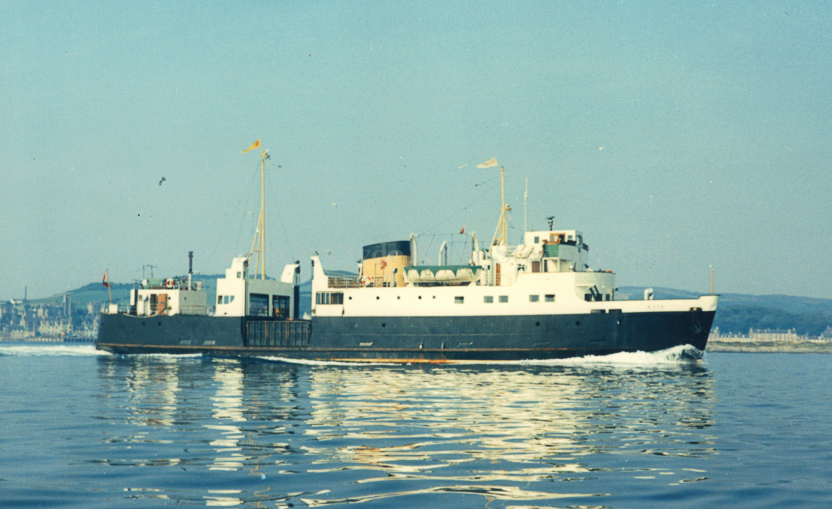 |
|
Caledonia, the paddler on which both of
Capt O’Brian’s parents served as crew members
|
Queen Mary II leaving Rothesay Bay
on 6 July 1974
|
Dad’s boat — the 1954 Bute
|
In 1987 he became purser of Isle of Arran — a job that fell to him by default, because senior Clyde pursers preferred to serve on the ‘streakers’. In those days, before consolidation of wages across the fleet, the Arran run offered little scope for winter overtime payments: the ship tied up at 6pm, three hours earlier than the ‘streakers’, with only one round trip on Sundays, “so no one wanted the job. I enjoyed it. Ian Walker and the late Stuart Findlay were fantastic captains to work with. They ran happy ships, and I learnt that ‘happy’ and ‘efficient’ go hand in hand. Masters are not there to win a popularity contest, but if your ship is happy, efficiency will usually follow.”
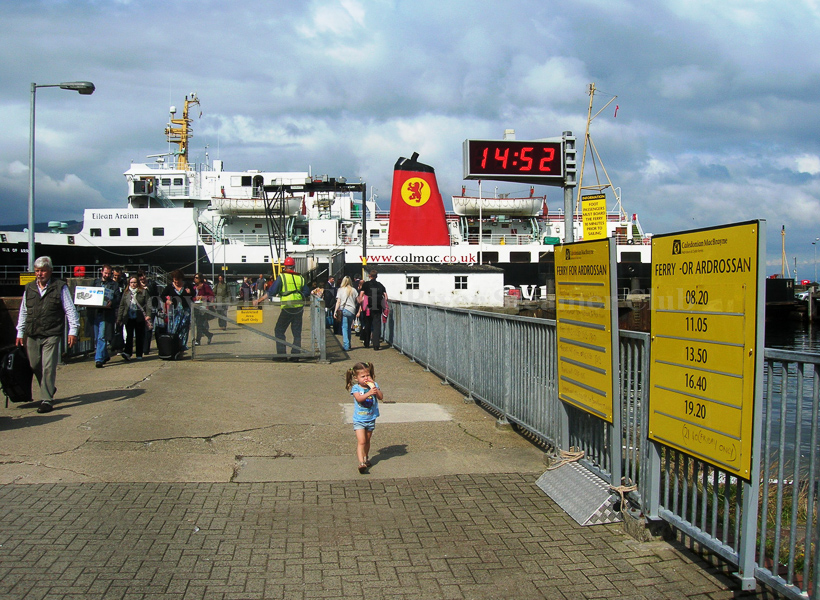 |
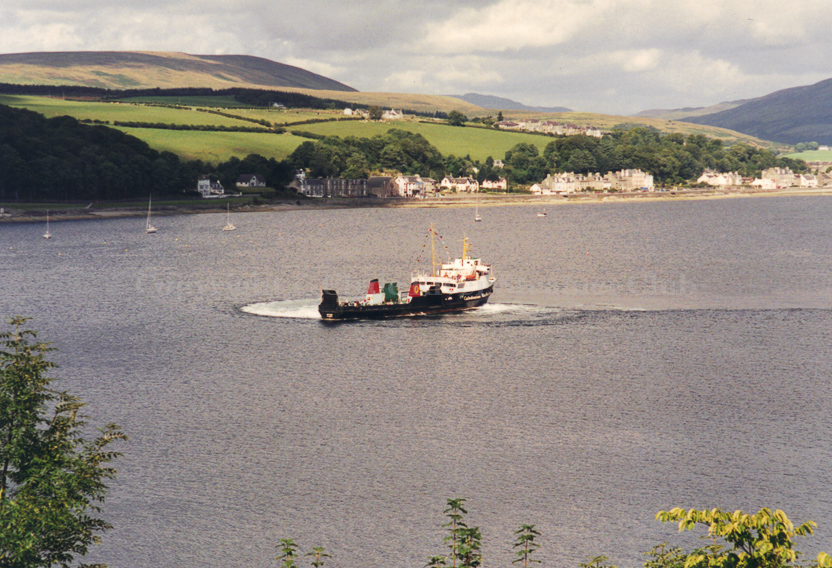 |
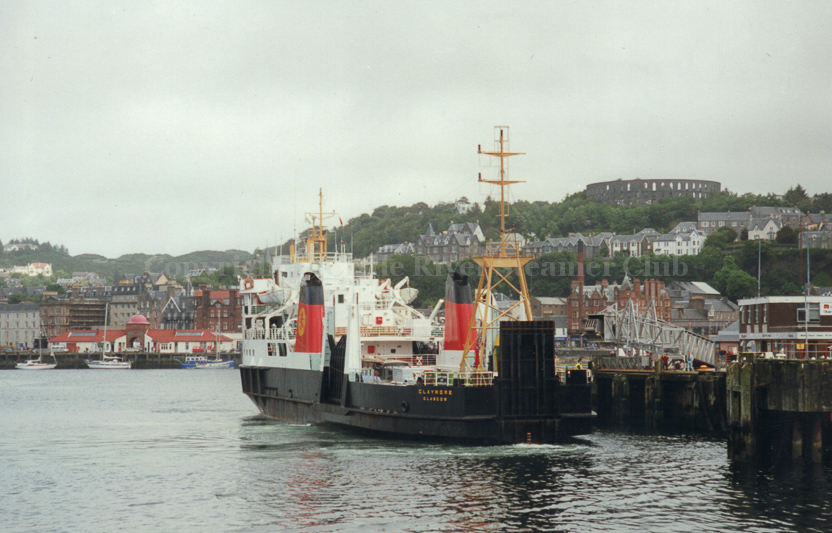 |
|
Isle of Arran, ‘a happy ship’
|
Saturn at Rothesay,
Capt O’Brian’s ‘second home’
|
Claymore, his first Hebridean ferry
|
It wasn’t long before he found himself on the ‘streakers’. The Bute run “was OK, because Rothesay was like a second home. Gourock-Dunoon was torture — 15 round trips a day. Eventually you didn’t know which direction you were going. The catering was like school dinners, ready-cooked food that was heated up on board. You’d manage a plate of soup on one leg of the journey and a main course on the return — lunch at 10.30am, tea at 3.30pm. You had a day off every third day. None of us liked it. The ships took turn-about — Gourock-Dunoon, Wemyss Bay-Rothesay and spare at Gourock. You were living out of a suitcase, home and away.”
It was a lifestyle that drove home to Andy O’Brian the need to better himself. Eyesight standards for merchant navy deck officers were being relaxed. Young deck colleagues were being put forward for second mate’s tickets — something he also aspired to. There was one element impeding his progress. His discharge book, in which mariners log their time at sea, had no entries prior to 1987. His five years as ‘dogsbody’ had gone unrecorded, meaning he would have to do another seven years on deck to notch up enough sea time.
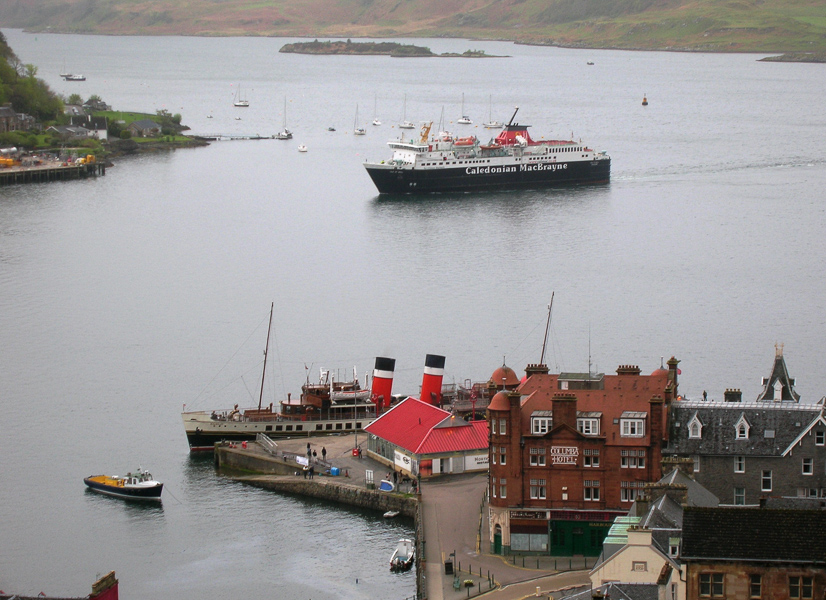 |
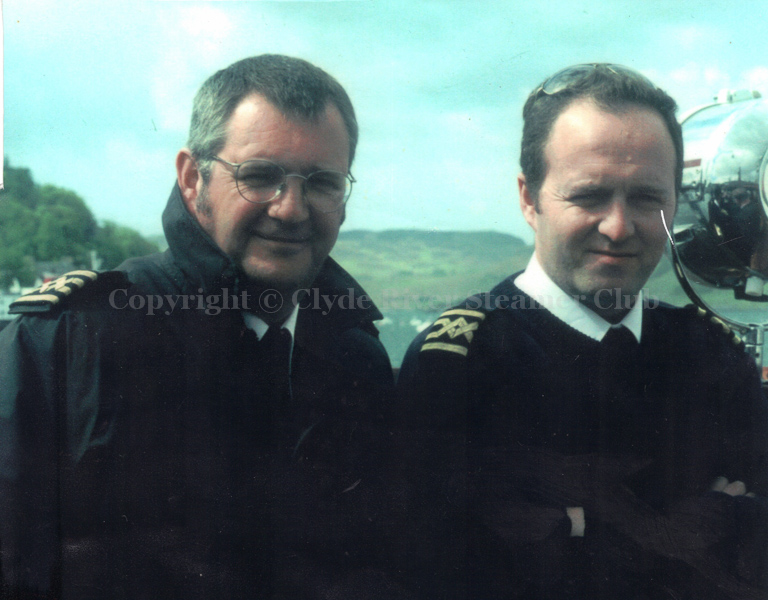 |
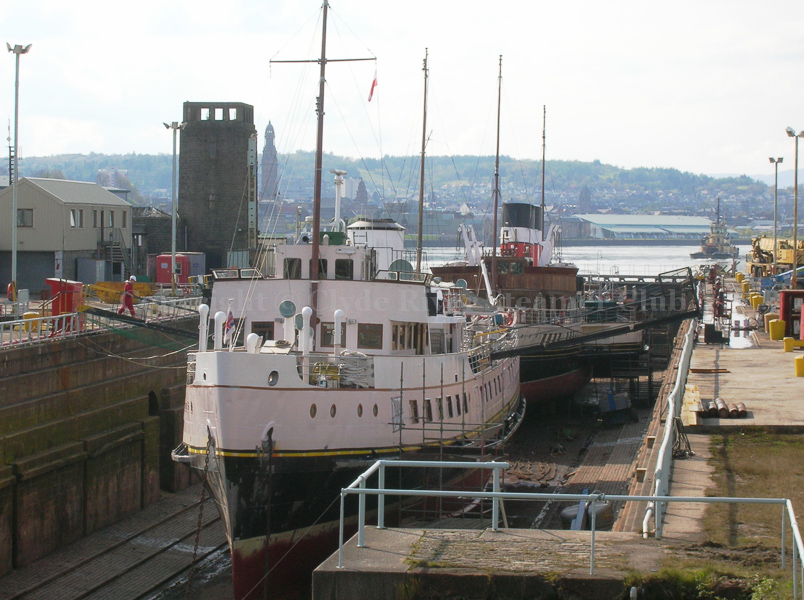 |
|
Waverley and Isle of Mull at Oban
|
Andy O’Brian’s first day as
Waverley’s ‘supernumerary captain’,
with Luke Davies
|
Balmoral with Waverley
at Garvel Dry Dock, April 2012
|
Back at South Tyneside in 2003 for his first mate’s ticket, he bumped into Luke Davies, who was sitting for his master’s ticket. The face was familiar: Luke was mate of Waverley under the captaincy of Graeme Gellatly, one of Andy O’Brian’s old CalMac pals. He didn’t realise it at the time, but this chance college encounter was to be life-changing. After another couple of years as CalMac relief second officer (“not my favourite position, never on the same boat two fortnights in a row”), he found himself one evening at Oban when Waverley was at the North Pier. Walking round from Isle of Mull, he met Luke on the paddler’s bridge. They chatted — and before he knew it, Luke was inviting him to serve as Waverley’s relief mate in the summer of 2005. CalMac consented and he spent the second fortnight of August on Waverley, returning to CalMac for the winter of 2005-6.
Among other highs, he lists the link with HMS Defender, Glasgow’s affiliated warship, and the days spent escorting Cunard and P&O liners. “They’re exciting, especially if the weather is good and you have six or seven hundred on board. You’re witnessing a fantastic maritime spectacle.”
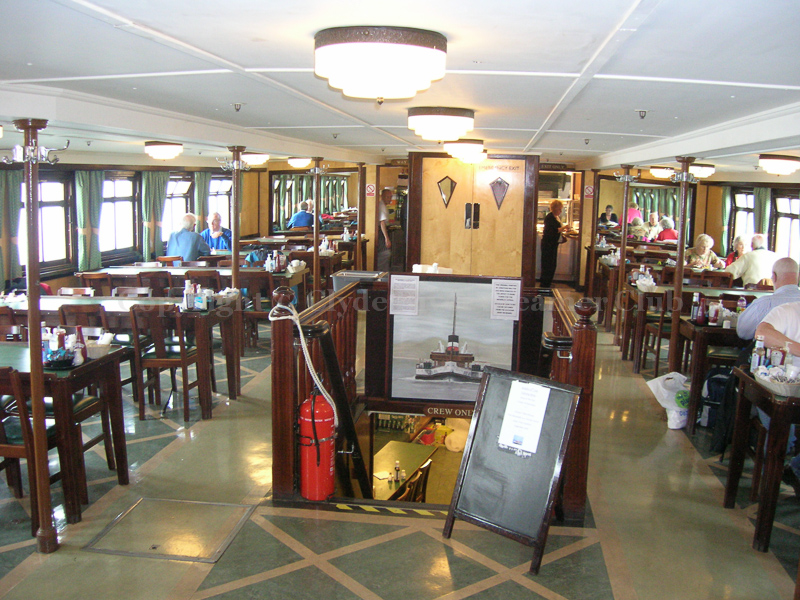 |
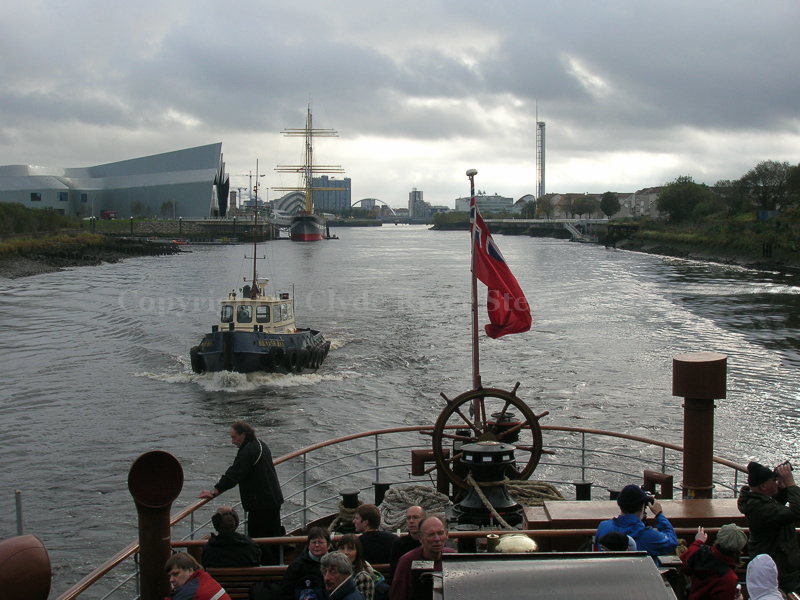 |
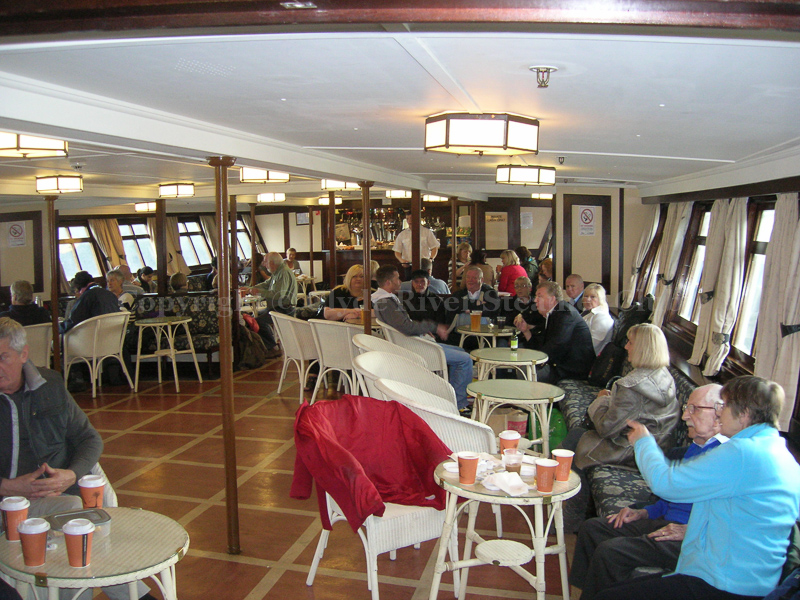 |
| Dining saloon in self-service mode | Burning less fuel: Waverley steams down the Clyde | Bar pricing can affect profitability |
Captain O’Brian stresses that every saving, however small, helps ensure the vessel’s future. This extends to the catering operation. Under the old self-service system, large amounts of unused food were being thrown out at the end of a day’s work. Magners cider used to be sold in bottles, which increased the weight of garbage for which WEL had to pay disposal charges. Under the new pre-ordering table service, there are fewer menu choices but much less wastage. Cider is now sold on draught. “We’re taking decisions which, overall, we think are for the good of the passengers and the company.”
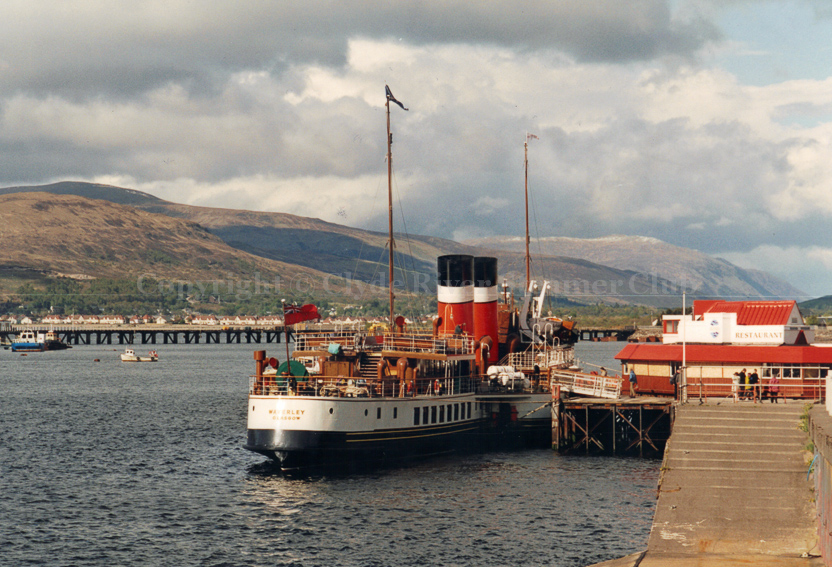 |
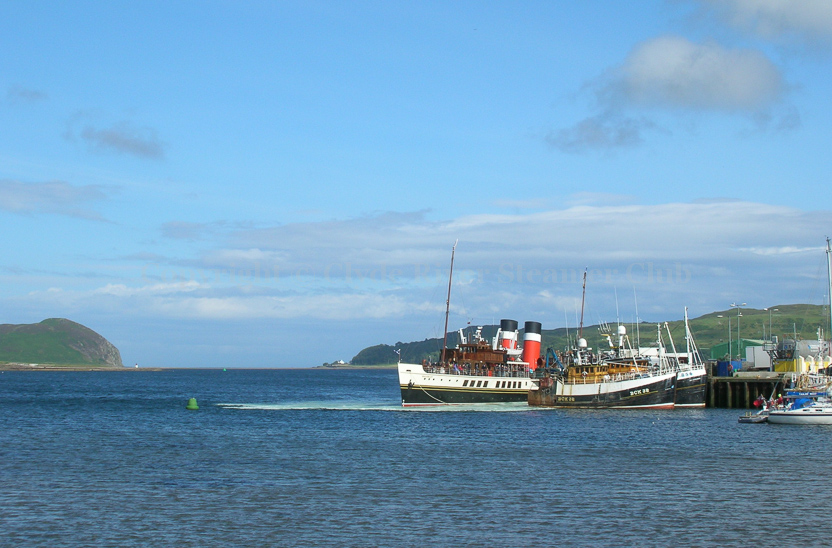 |
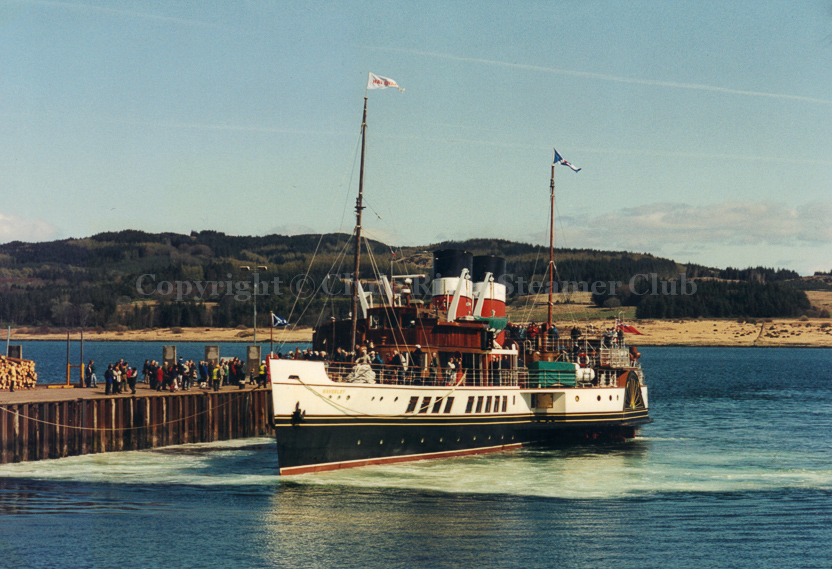 |
|
Never again? Waverley at Fort William
on 8 May 2005
|
At Campbeltown on 15 July 2012
|
At Ardrishaig on 20 April 2001
|
The closure of Fort William pier, owned by Highland Council, has been a blow. The only reason for Campbeltown’s closure this summer was a delay to restructuring work on the fish quay. Ardrishaig’s pier master is open to the prospect of Waverley calling, but the way the pier fenders are draped in tractor tyres is not conducive to safe berthing. “We’d like to go there, but until they change the fenders, we can’t do it.”
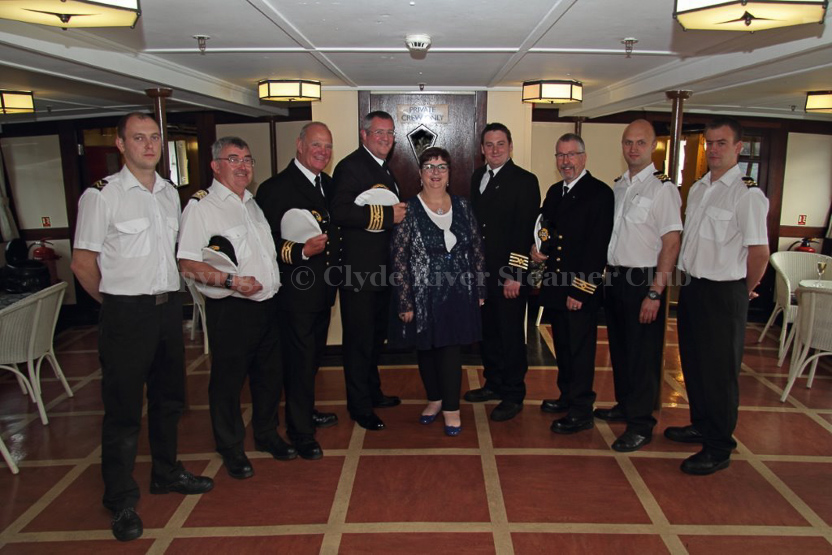 |
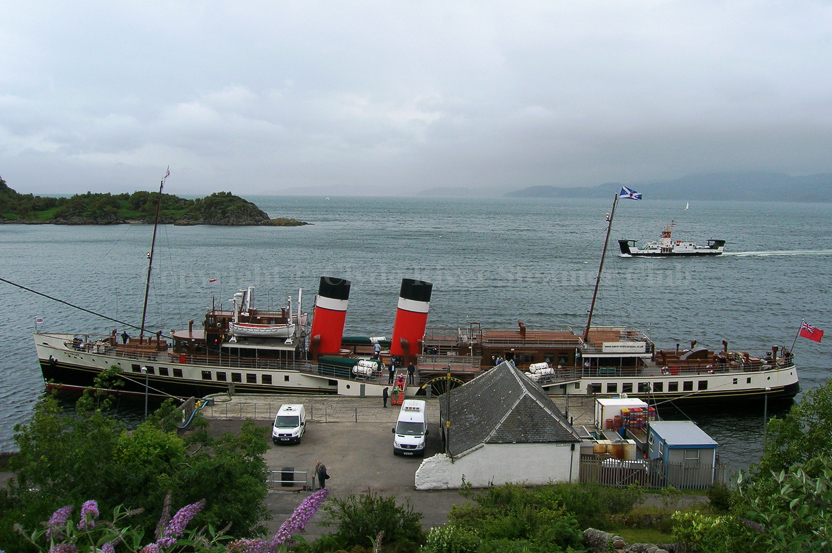 |
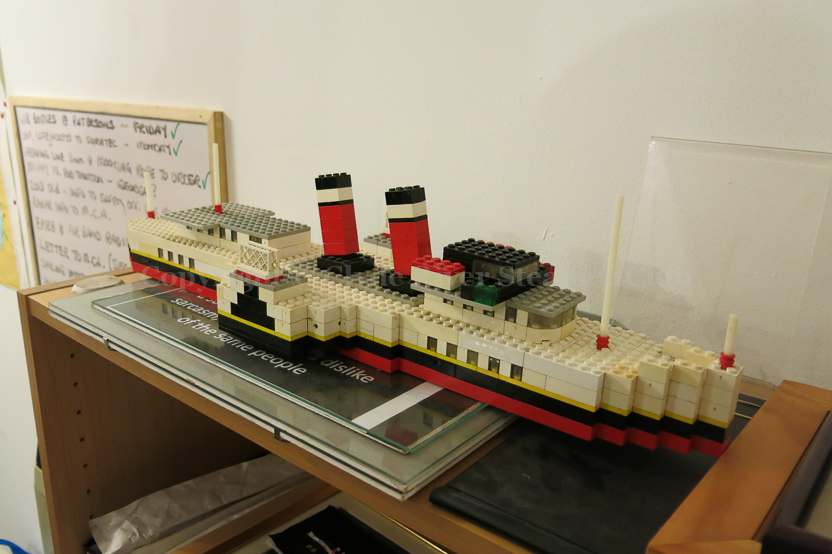 |
|
Key personnel —
Waverley’s officers with Christine Weir
|
At Tarbert, with Isle of Cumbrae
|
A Lego model of Waverley,
made by Capt O’Brian’s twin sons,
sits in his office at Lancefield Quay
|
Andy O’Brian was talking to CRSC magazine editor Andrew Clark at the end of June 2014.
Sign up for CRSC membership here and further your interest in Scottish and UK shipping.
